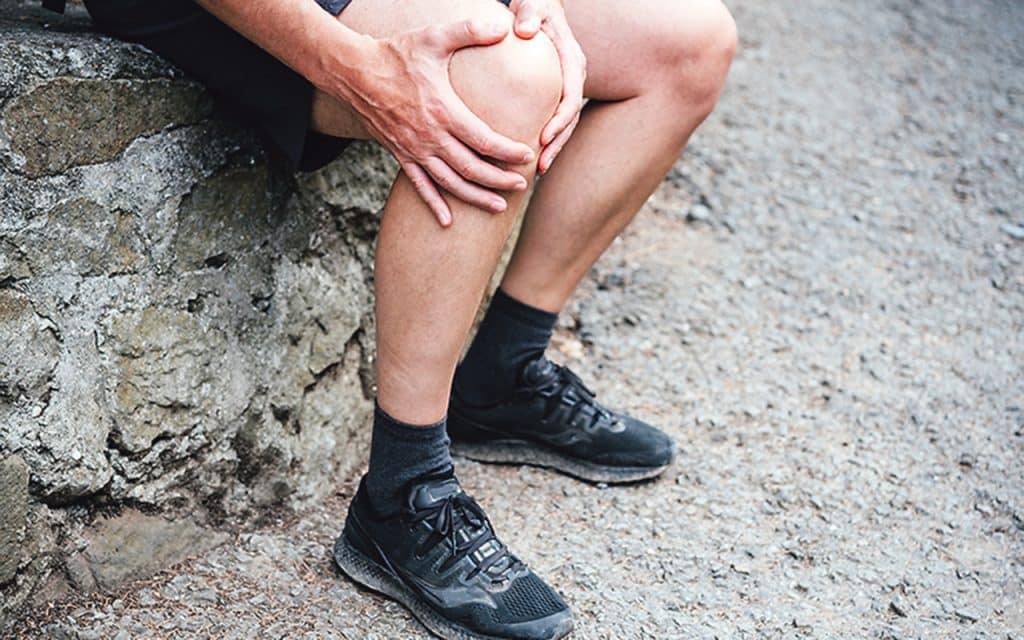
As I write this it is the most beautiful crisp September day, perfect for taking to the hills, and were it not for my various work duties, I would have headed for Sheep’s head for a lovely long hike. Hiking got me thinking about a friend of mine who, while loving her walks, is battling with the dreaded IT band syndrome, or Illiotibial band syndrome, that often plagues cyclists, runners and hikers, amongst others. IT band syndrome can start out as a rubbing or a clicking sensation on the outside of the knee and can become an aching or burning sensation impacting the entire outer thigh and even include the hip. Pain is aggravated with increases in activity. Not very pleasant if you’re halfway up or down a mountain or just halfway through your marathon or long-distance cycle. It is most often caused by repetitive friction of the band against the outer knee during movement compounded with long distance activities.
A quick stretch on your mountainside will sadly not help alleviate the symptoms, as the IT band is not in fact a muscle but a thick band of connective tissue that runs along the outside of the thigh, connecting the hip to the knee.
So what causes IT band syndrome and how can we alleviate it?
Women are more prone to developing IT band syndrome due to their wider hip to knee ratio, furthermore, there are times in a woman’s life when they may be more prone to developing this issue. Pregnancy is a classic time for this syndrome, as the combination of the hormone relaxin, which increases ligament laxity and the extra weight carried during pregnancy, create the perfect conditions. Menopause is another time where this syndrome may strike, as once more hormonal changes affect the ligaments and connective tissue.
Both men and women however are subject to this painful condition. Poor biomechanics and in particular foot biomechanics, improper training techniques, and muscle imbalances, all contribute to the onset of this condition.
Steps to healing
Rest: Firstly, when the pain of IT band syndrome strikes, you do have to rest it; this is the frustrating bit for those of us who love our long runs/walks/cycles and it is particularly frustrating if we are in training for an event. But rest is important where there is inflammation. Acute pain is a signal from the body that it is dangerous to persist with the intensity of activity that has caused the pain. But let the pain point you to what is needed for corrective action.
Decompress: As I mentioned above you can’t technically stretch the IT band, but you can help to decompress it. Using a rolled-up towel on the IT band can be helpful but only if you can tolerate it, foam rollers can be a little too aggressive when recovering from IT band inflammation. Lie on your side propped on your elbow or lying flat and place the towel just above the knee on the outside of the leg. Be warned, it can be a very painful spot to work on even if you have no acute issues with your IT band, so do make sure your inflammation has died down sufficiently to handle this decompression technique. You need to stay aware of your breath as you practice this technique. If you find yourself holding your breath or wincing at any point you will not achieve the relaxed state necessary for the fascia to relax. You can search forward and back a little on your towel, looking for your sore spots and remembering to breathe. About three minutes is sufficient for this practice. You can move the towel to the front of the thighs then to decompress the big quad muscles, a foam roller may work better here, as you can move more easily up and down the leg. It is important that the movement is very slow however, as you really want to feel into the sensation and not glance over it. I recommend stretching out the gluteal muscles after decompressing the IT band and thigh muscles. Simply cross the knee over towards the opposite shoulder while keeping your pelvis on the ground and you should experience a good stretch across the buttocks and down the back and side of the leg a little.
Strengthen: Bridges and squats are most commonly prescribed to help strengthen the gluteal muscles, however squats can be kryptonite to an individual with poor biomechanics. If your knees or feet roll in as you squat, you will aggravate the IT band further and not build up the necessary muscles. I prefer bridges and standing glute strengtheners where this is the case, where you bring one leg behind you while maintaining a good upright posture and you squeeze that leg back for ten repetitions ensuring you engage your glutes. An added bonus here is that you will be strengthening the glutes on your standing leg also. Repeat on both sides. Glute muscles are the key! Abdominal core strength is also hugely helpful as it takes load off the limbs, find a good core class to help you develop awareness and strength.
Build better biomechanics: What’s happening in your knees and feet as you walk, run or cycle? Pronation of the feet is commonly associated with IT band syndrome; this is where your feet turn or roll inward. It’s not only the feet that roll inward but the knees and the thigh bones and this strains the IT band. Orthotics can be a recommendation here but the issue with orthotics is that we become dependent on them and miss the opportunity to strengthen. That being said, it can be a solution for some. There are many foot strengthening exercises that will help, among them heel raises where we roll up and down on the balls on the feet using your Pilates breath (lifting up on the exhale with an emphasis on drawing the navel to the spine, rolling back down onto the foot on the inhale). Progress to doing it standing on one leg.
I’m also a fan of the towel scrunch, which I prescribe regularly. Lay out a thin towel and while sitting start pulling the towel towards you little by little, with your toes, until it is scrunched up under your feet. This helps strengthen the arches, which helps correct the inward roll of the knee and thereby takes pressure of the IT band.
Practice patience: The one no-one wants to hear. For those who love your hiking, running or cycling, it is so tempting to get back too soon or to overdo it, especially when you are in the zone or out in nature. But a gradual recovery is best. Build on the four principles above and stay consistent in your practice and your recovery will be consistent and maintainable in most cases.



